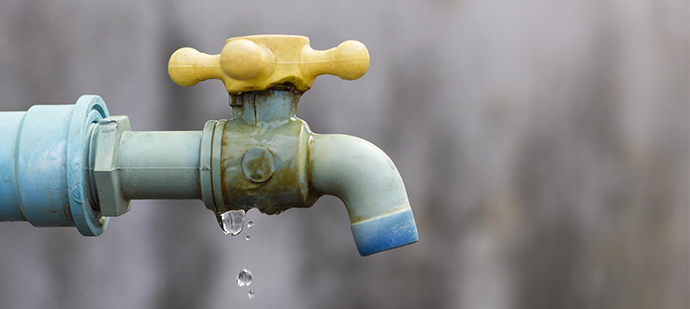Reveal Concealed Water Line Leaks: 6 Proven Finding Techniques
Reveal Concealed Water Line Leaks: 6 Proven Finding Techniques
Blog Article
Just about everyone will have his or her own way of thinking with regards to Top leak detection hacks.

Early detection of dripping water lines can mitigate a prospective catastrophe. Some tiny water leaks may not be noticeable.
1. Check Out the Water Meter
Every house has a water meter. Examining it is a proven way that assists you find leakages. For beginners, shut off all the water sources. Make certain no one will certainly flush, use the tap, shower, run the washing machine or dishwasher. From there, go to the meter and watch if it will transform. Considering that nobody is utilizing it, there must be no movements. That indicates a fast-moving leakage if it relocates. If you spot no changes, wait an hour or 2 and inspect back once more. This implies you may have a slow leak that can also be below ground.
2. Inspect Water Consumption
If you spot abrupt adjustments, regardless of your usage being the very same, it indicates that you have leaks in your plumbing system. A sudden spike in your bill suggests a fast-moving leakage.
A stable rise every month, even with the exact same habits, shows you have a slow leak that's likewise gradually escalating. Call a plumber to completely inspect your residential or commercial property, especially if you feel a cozy location on your flooring with piping beneath.
3. Do a Food Coloring Examination
When it comes to water intake, 30% comes from commodes. If the shade in some way infiltrates your bowl during that time without flushing, there's a leak in between the container and also dish.
4. Asses Outside Lines
Do not forget to inspect your outside water lines as well. Test spigots by attaching a yard hose. Ought to water permeate out of the link, you have a loosened rubber gasket. Replace this as well as ensure all connections are tight. It will certainly assist obtain it expertly took a look at and kept every year if you have actually obtained a lawn sprinkler system. One tiny leakage can throw away lots of water and surge your water costs.
5. Inspect and also Assess the Situation
Homeowners ought to make it a habit to check under the sink counters and also also inside closets for any kind of bad odor or mold and mildew growth. These 2 red flags suggest a leak so timely interest is required. Doing regular examinations, even bi-annually, can conserve you from a major issue.
Check for discolorations as well as weakening as a lot of appliances and also pipelines have a life expectancy. If you suspect dripping water lines in your plumbing system, do not wait for it to rise.
Early detection of leaking water lines can mitigate a possible calamity. Some small water leaks may not be visible. Examining it is a surefire way that helps you discover leakages. One tiny leakage can waste bunches of water and also surge your water costs.
If you believe dripping water lines in your plumbing system, do not wait for it to escalate.
WARNING SIGNS OF WATER LEAKAGE BEHIND THE WALL
PERSISTENT MUSTY ODORS
As water slowly drips from a leaky pipe inside the wall, flooring and sheetrock stay damp and develop an odor similar to wet cardboard. It generates a musty smell that can help you find hidden leaks.
MOLD IN UNUSUAL AREAS
Mold usually grows in wet areas like kitchens, baths and laundry rooms. If you spot the stuff on walls or baseboards in other rooms of the house, it’s a good indicator of undetected water leaks.
STAINS THAT GROW
When mold thrives around a leaky pipe, it sometimes takes hold on the inside surface of the affected wall. A growing stain on otherwise clean sheetrock is often your sign of a hidden plumbing problem.
PEELING OR BUBBLING WALLPAPER / PAINT
This clue is easy to miss in rooms that don’t get much use. When you see wallpaper separating along seams or paint bubbling or flaking off the wall, blame sheetrock that stays wet because of an undetected leak.
BUCKLED CEILINGS AND STAINED FLOORS
If ceilings or floors in bathrooms, kitchens or laundry areas develop structural problems, don’t rule out constant damp inside the walls. Wet sheetrock can affect adjacent framing, flooring and ceilings.
https://www.servicemasterbyzaba.com/blog/how-to-detect-water-leakage-in-walls/

As a devoted reader about Leaking water lines, I thought sharing that portion was a smart idea. Are you aware of another person who is in to the topic? Be sure promote it. Thanks a lot for going through it.
Dial for results! Report this page